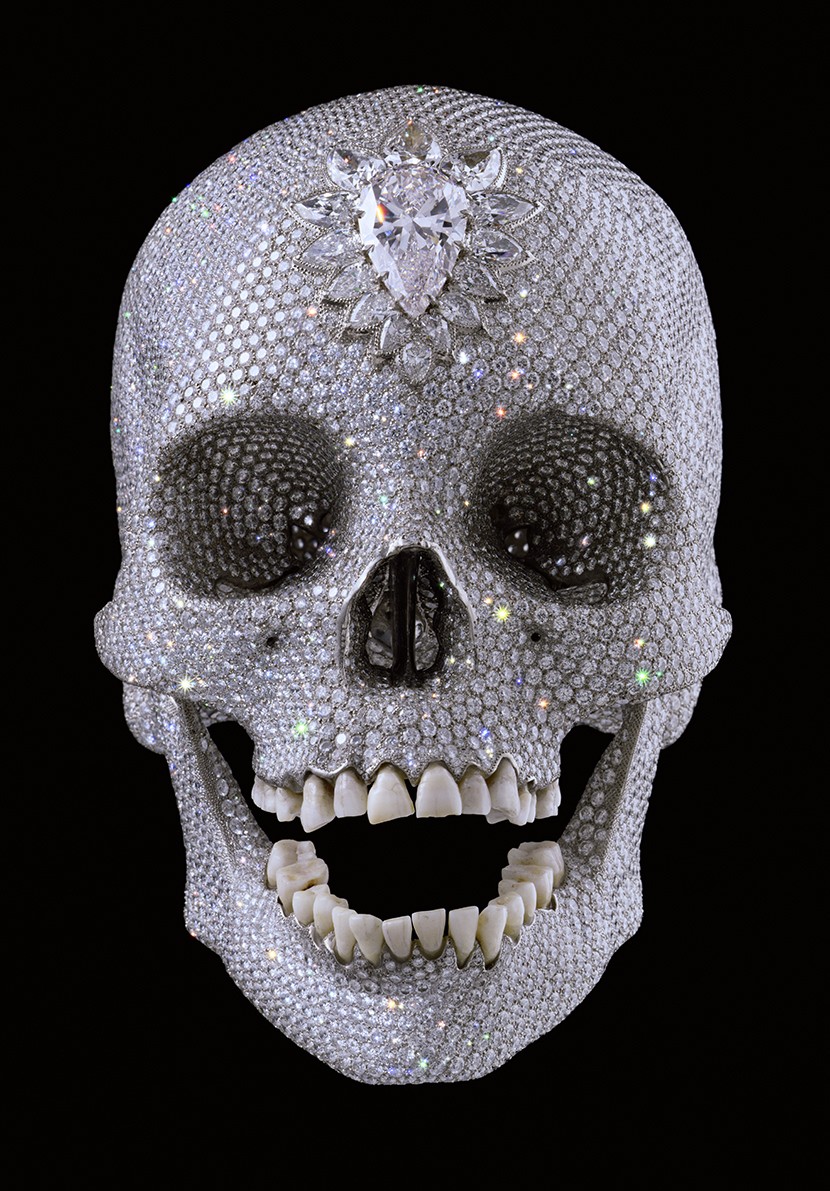Damien Hirst
16 Sep - 15 Nov 2015

Damien Hirst, For the Love of God, 2007
Photographed by Prudence Cuming Associates
© Damien Hirst and Science Ltd. All rights reserved, DACS 2015
Photographed by Prudence Cuming Associates
© Damien Hirst and Science Ltd. All rights reserved, DACS 2015
DAMIEN HIRST
16 September – 15 November 2015
Curators: Gunnar B. Kvaran and Therese Möllenhoff
Born in Bristol, UK in 1965, Damien Hirst is commonly acknowledged to be one of the most influential artists of his generation. Hirst holds a special position within the Astrup Fearnley Museet, which now boasts a significant collection of his works, starting with the acquisition of Mother and Child (Divided) (1993) in 1996. The museum’s entire collection of Hirst works has now been brought together for the first time, to coincide with the exhibition of one of the artist’s most iconic works: the diamond skull, For the Love of God (2007).
Hirst works in sculpture, installation and painting. Deriving his artistic language from an extraordinarily diverse range of sources – including the long tradition of the readymade, the imagery of advertising and Victorian curiosity cabinets – he appropriates, collages and assembles common objects and known artistic structures and vocabularies without any kind of hierarchy, to create new and highly symbolic works that raise profound metaphysical questions.
Hirst seduces spectators with his often disquieting reflections on mortality: cadavers suspended in formaldehyde; butterflies affixed to gloss-painted canvases; pharmaceutical and medical equipment housed in sterile cabinets; flies amassed on pictorial surfaces; images of cancer cells. In all these works, the spectator is confronted with a ‘decisive moment’ of no return, a rigorous sense of total equilibrium. Fatal situations are eerily fixed and suspended in time as if the artist were trying, metaphorically, to reverse nature’s cycle. Over a quarter of a century since he emerged onto the contemporary art scene, Hirst’s work has now been rearticulated into a state of the sublime – a new kind of beauty in art history.
The centrepiece of the exhibition is For the Love of God, a platinum cast of a human skull set with diamonds, never before seen in Scandinavia. One of Hirst’s most iconic and widely recognised works, it acts as a memento mori, reminding the viewer of the fragility of life. The dazzling beauty of the diamonds, combined with the skull, a symbol of death, demonstrate Hirst's enduring fascination in the means by which mankind attempts to comprehend its own mortality.
Alongside this prestigious loan, the exhibition brings together the museum’s magnificent selection of Damien Hirst works, which includes some of the most significant pieces to have emerged from the artist’s extraordinary career.
16 September – 15 November 2015
Curators: Gunnar B. Kvaran and Therese Möllenhoff
Born in Bristol, UK in 1965, Damien Hirst is commonly acknowledged to be one of the most influential artists of his generation. Hirst holds a special position within the Astrup Fearnley Museet, which now boasts a significant collection of his works, starting with the acquisition of Mother and Child (Divided) (1993) in 1996. The museum’s entire collection of Hirst works has now been brought together for the first time, to coincide with the exhibition of one of the artist’s most iconic works: the diamond skull, For the Love of God (2007).
Hirst works in sculpture, installation and painting. Deriving his artistic language from an extraordinarily diverse range of sources – including the long tradition of the readymade, the imagery of advertising and Victorian curiosity cabinets – he appropriates, collages and assembles common objects and known artistic structures and vocabularies without any kind of hierarchy, to create new and highly symbolic works that raise profound metaphysical questions.
Hirst seduces spectators with his often disquieting reflections on mortality: cadavers suspended in formaldehyde; butterflies affixed to gloss-painted canvases; pharmaceutical and medical equipment housed in sterile cabinets; flies amassed on pictorial surfaces; images of cancer cells. In all these works, the spectator is confronted with a ‘decisive moment’ of no return, a rigorous sense of total equilibrium. Fatal situations are eerily fixed and suspended in time as if the artist were trying, metaphorically, to reverse nature’s cycle. Over a quarter of a century since he emerged onto the contemporary art scene, Hirst’s work has now been rearticulated into a state of the sublime – a new kind of beauty in art history.
The centrepiece of the exhibition is For the Love of God, a platinum cast of a human skull set with diamonds, never before seen in Scandinavia. One of Hirst’s most iconic and widely recognised works, it acts as a memento mori, reminding the viewer of the fragility of life. The dazzling beauty of the diamonds, combined with the skull, a symbol of death, demonstrate Hirst's enduring fascination in the means by which mankind attempts to comprehend its own mortality.
Alongside this prestigious loan, the exhibition brings together the museum’s magnificent selection of Damien Hirst works, which includes some of the most significant pieces to have emerged from the artist’s extraordinary career.
